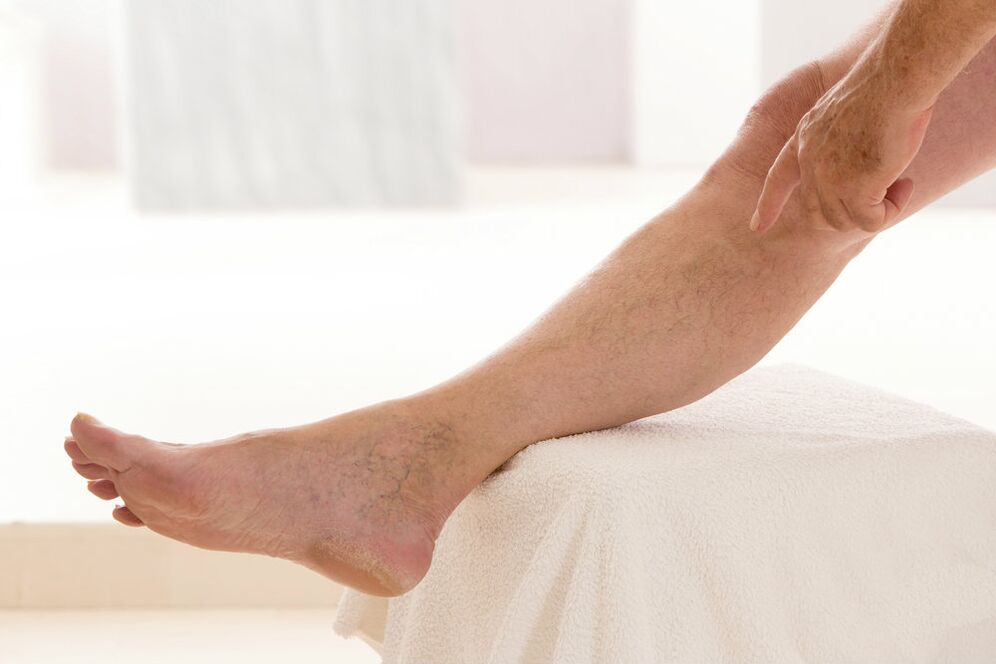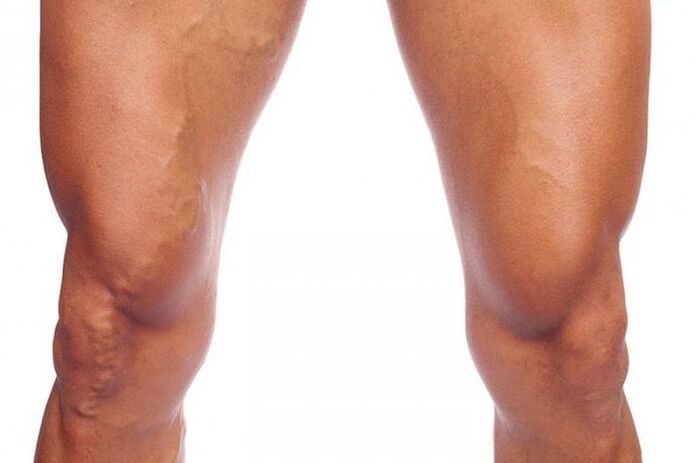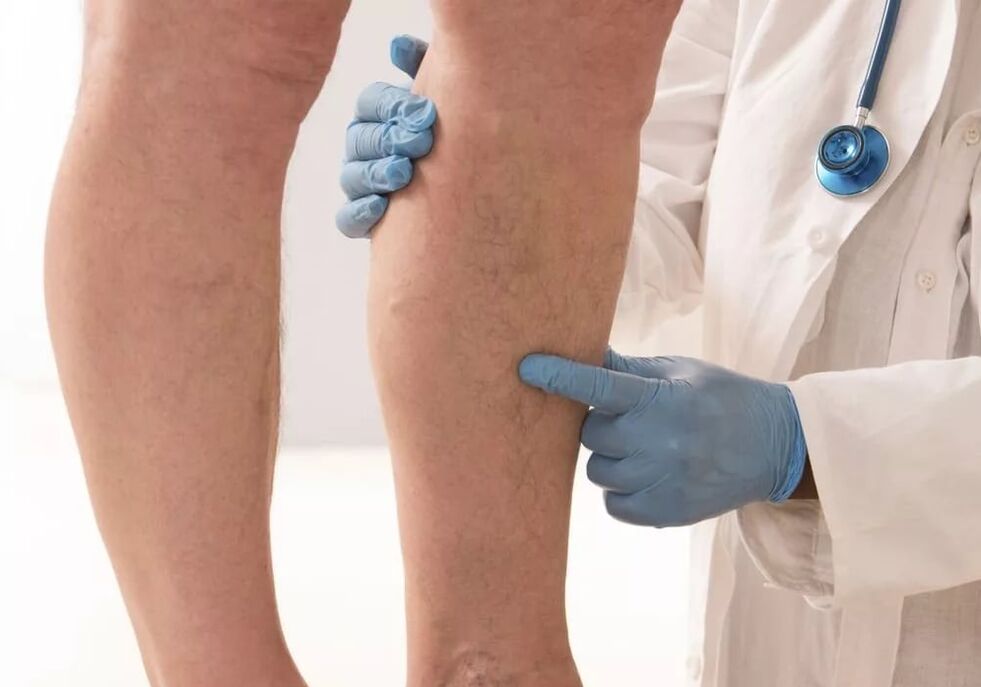The task of effective treatment of varicose veins on the legs is becoming increasingly relevant. During the development of civilization, humanity has not learned to cope with this problem, which is not just a cosmetic defect. After passing the initial phase, the varicose veins begin to be felt with pain, swelling, dermatitis, ulcers.
At risk of the development of varicose veins, people who are subject to long static loads (in a fixed position), who suffer from obesity and lead a sedentary lifestyle. The number of disease detection cases in adolescence and even increases childhood. A huge impact on the occurrence of the disease is exercised by a profession: varicose veins develop in 80 % of teachers, 70 % of tribal drivers, 85 % of sellers. But managers are at risk only in 20 % of cases.
The causes of development and symptoms

The main reason for the development of varicose veins is, strangely, progress. People have less and less need to move. And this is a fertile ground for stagnant manifestations, which include varicose veins. The disease refers to cardiovascular and in official medicine, an entire direction to IT-Phlebology is administered, which studies, including varicose veins on the legs, whose symptoms and whose treatment are well studied as part of international research.
The rhythmic cardiac function creates the pressure difference in the body, due to which blood circulation occurs. From the heart, the blood will "spread" along the arteries and the capillaries, returns to the veins, but when it rises along the legs, it must overcome the gravity and the impulse from the heart is not an assistant, because almost all the energy went to tie the blood through the small blood vessels. If the movement of the blood along the deep outline is difficult, there is a drain in the outside, which does not have the hard muscle frame, so during overloads it is easily stretched.
For this situation, nature has foreseen three compensatory mechanisms that help raise blood:
- Breathing: the lungs that expand during inspiration create a redistribution of pressure, due to which blood losses occur.
- Movement. The venous system consists of a deep internal part, through which over 80 % of the movement of return and external blood (subcutaneous) blood, necessary for safety and not designed for long loads. The internal veins are surrounded by muscles, which, by contrast, push the blood upwards. But when the muscles relax, the blood does not flow back, because for this reason the third compensatory mechanism is provided.
- The intravenous valves system that open under a certain blood pressure. If the pressure is weakening, the band closes, preventing the blood back.
The causes of the varicose veins of the lower ends are heterogeneous and ambiguous. It is difficult to highlight a separate and launch development, because a whole complex is involved. They are considered the main factors that interfere with the normal blood and related blood flow - developing the weakness of the venous wall:
- endocrinology;
- Inflammation of the pelvic organs;
- obesity;
- injuries;
- Hypodynamia;
- flat feet;
- inheritance;
- A large number of free radicals in the body.
Symptoms of the disease
Signs of varicose veins on the legs are known to many: this:
- The tone of the blue painted skin or a network of vascular stars.
- Internpidement and gravity in the legs, cramps in the muscles of the calfskin, speaking of the beginning of the development of chronic venous insufficiency.
- Swelling to the ankles and in the lower third of the lower part of the leg.
- The expansion of the veins under the skin, the appearance of visible "knots" is the main external sign of the disease.
Traditional treatment methods
In all phases of the disease, drugs that stabilize the structure of the venous wall are widely used and increase their tone. In serious forms of venous insufficiency, anticoagulants are used. Inflammation and trophic ulcers can be treated with antifungal and antibacterial agents and in case of venous eczema and dermatitis, antihistamine are used, with edema edema - diuretics that greet potassium. Non -pounded anti -inflammatory drugs are used for pain and convulsions. Used gel and creams externally based on special drugs.
Conservative (non -surgical) treatment methods, promptly applied and organized, allow to obtain a cure or improvement in most cases, which justifies this tactic as a start for all patients. As a result of a study conducted at the Kazan State Medical University, it was found that in adolescence in 15 % of cases, it is possible to obtain an improvement or a cure and in 30 % - to stabilize the process. These indicators are much higher than adult patients, that is, first the conservative treatment is started, the greater the result.
Traditional surgery is gradually supplanted by the minimally invasive surgery methods, which can only be influenced by the "sick" part of the ship. Supreme engravings are created and special substances are introduced into the ship's light. The consequences of these interventions seem aesthetically pleasant.
Compression sclerotherapy - the introduction of liquid and foamy drugs in the lumen of the vein with its subsequent sponge. The treatment is minimal invasive, does not require general anesthesia and helps to avoid temporary disability. But if the substance accidentally penetrates the deep veins, then there is the risk of thrombophlebitis.

Laser coagulation is one of the methods of the so called "office surgery", after which there are no periods of disability. The internal wall of the vein is influenced by laser radiation, due to which the vein "closes".
Flebectomy is a painless operation to remove an expanded vein, produced through a puncture. After the operation, only bruises remain, which pass within a month.
Endoscopic surgery (SPS) is a selective effect on the affected areas of the veins without injury to the surrounding tissues. The operation is performed under the control of the endoscope, rehabilitation is twice faster than the usual operation, the patient leaves the hospital on the third day.
Surgical removal of varicose veins. The interested vein is cut by the subcutaneous and removed tissue.
The auxiliary methods of the traditional treatment of varicose veins on the legs are:
- laser therapy that helps to remove venous stars;
- Manual lymphatic drainage that activates the lymphatic system;
- Darsonvalization that helps to treat blood circulation disorders;
- Special therapy that helps improve blood microcirculation;
- electrical stimulation that strengthens blood vessels and eliminates circulatory disorders;
- Elastic compression of the legs, effective in the phase of the appearance of the vascular stars (use of the compression knitwear);
- Hydrotherapy - bathrooms, contrast shower, hydromass, coast with cold water;
- Exercises are used as a prevention method or in the postoperative period.
Traditional medicine
The treatment of varicose veins on the legs in the initial stages is successfully performed using non -traditional medicine methods. Phytotherapy is among the few traditional medicine methods recognized as an officer as an auxiliary therapy method, completing drugs and surgical treatment. The use of vegetable agents does not give a quick effect, so the mood should be for a long course. With varicose veins, among others, common plants such as:
- Aloe Tree ("tabletop") helps to eliminate unpleasant sensations and a burning sensation in the legs;
- The leaves and kidneys of birch in the form of a decoction are used to get rid of the edema;
- Ginkgo Biloba contributes to elasticity and increases the strength of the walls of the vein;
- A normal must of San Giovanni is used for trophic ulcers against the background of varicose veins;
- Bolshoi Burdens heals varicose ulcers;
- Field eassetail in the form of a decoction is used for edema by venous insufficiency.
Clay treatment offers the use of compressions, applications and clay cakes:
- White clay helps to improve blood circulation and cell regeneration;
- The blue clay containing salts of cadmium and cobalt relieves inflammation and improves peripheral blood circulation;
- The green clay, which contains iron oxide, copper, calcium, magnesium, gold, cobalt, silver, relieves swelling and toning the blood vessels.
Talassotherapy uses the healing power of the sea, its gifts and the atmosphere of the coast of the sea. This includes walks along the shore, a diet that includes seafood, bathrooms in the sea and its contemplation, applications with seaweed and sea silder. All this contributes to an increase in the speed of blood flow and removes stagnation.
HIRUDOTHERAPY - Treatment with leeches, whose saliva contains more than a hundred biologically active substances. Once in the blood, the components of the slope of the leeches improve the microcirculation of the blood, which improves the saturation of the tissues with oxygen. The substances contained in saliva contribute to the absorption of blood clots and prevent the formation of new ones. With progressive varicose veins, therapy is not able to return the veins to the veins, but in the initial stages it is very effective.
Prevention

The statistics indicate that the initial signs of the varicose veins occur in youth. Without waiting for the development of the disease, it is better to pay attention to preventive measures and make some efforts to prevent it. The main task at this stage is to eliminate risk factors and prevent an increase in loads on the venous system, so as not to think about how to treat varicose veins on the legs:
- Above all (about 60 percent) it is subject to the development of the varicose veins of the legs, which, due to professional duties, are all day. Twice less risk for workers who lead seated all day. If the legs swell strongly by the end of the day, there is a huge load on the blood vessels and the stagnation of the blood occurs. Preventive measures during work, burdened by a long load on the venous system: every hour it is necessary to walk for 2-3 minutes or at least take movements that simulate the walk.
- A balanced diet, containing proteins, fats, carbohydrates, minerals and vitamins containing sufficiently and recommended proportions, helps to maintain health. The volume of vegetables and fruits in the diet should overcome the volume of animal food.
- In case of completion of the trend, it is necessary to introduce a restriction in food, resort to diets, engage in physical education in order to maintain a normal weight.
- In the wardrobe there should be no clothes that strictly tighten the body and socks with a narrow elastic band that interferes with the normal blood flow.
- Close shoes and high heels complicate the work of the veins. The shoes must be selected for size and shoes on a comfortable heel not exceeding 5 cm.
- Of great importance in the prevention of varicose veins are practicing sports. In this case, load exercises must be avoided. Most of the swimming, cycling, video.
- Hiking should be used on every occasion: to walk and not go to work and work. If it is very far, go out to 2-3 stop from the destination and go on foot.
The treatment of varicose veins is a series of measures in which it is necessary to balance the use of drugs, compression and surgery methods.
The main thing is prevention, but if the disease has started to appear, the timely beginning of the treatment will help to do it.



















